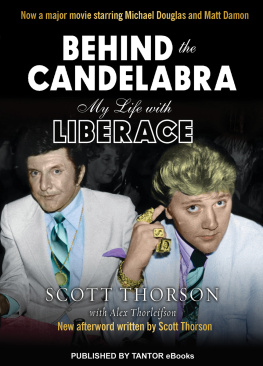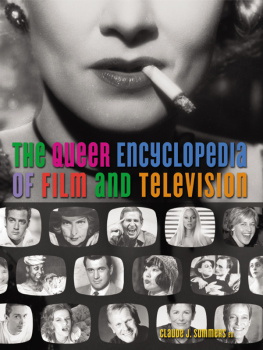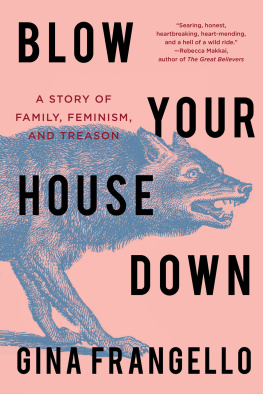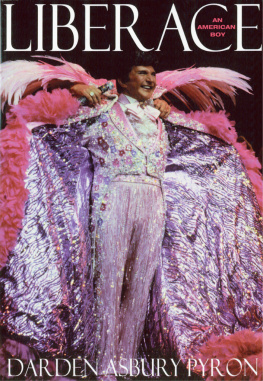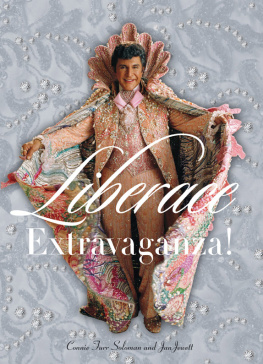Afterword
Beyond the Candelabra
At the close of the time period covered by Behind the Candelabra, I was a young man, but a young man with the life experience of someone much older and more experienced than is typical for my age. Lees money, age and dominating role within our relationship had resulted in my meeting and coming to know people with considerable influence in a wide range of pursuitsmovies, television, Vegas, nightclubs and organized crime, primarily the drug trade.
And I had possessions. My famous lawsuit against Lee was not terribly successful, but during my time with him, I accumulated considerable assetsnot just hard assets like cars, houses and jewelry, but also investment in businesses. And the businesses with the biggest impact on my life going forward were nightclubs.
In the best of times, the nightclub business attracts investors with less than the most altruistic motivations. With my luck, I found myself in partnership in a number of clubs with a man who went by the alias Eddie Nash. Nashs primary occupation was acting as kingpin of the drug trade for organized crime throughout Southern California, among other areas. In his overall enterprise, our nightclubs primary purpose was to launder money being thrown off by his drug business. We were scrubbing huge amounts of drug money. Nashs success in the drug trade attracted the attention of and created envy in smaller, less disciplined drug traders, particularly a wild group known throughout the Southland as the Wonderland Gang because of the location of their operating headquarters on Wonderland Avenue in the Laurel Canyon section of Los Angeles.
In one of the most sensational cases of the 1980s, Nash colleagues butchered four members of the Wonderland Gang in their hangout in retribution for their break-in at his mansion and theft of drug inventory, massive cash reserves, jewelry and other valuables. Nash gained knowledge of the perpetrators of the theft by torturing John Holmes, a pathetically drug-addicted porn star who frequented both Nashs mansion and the Wonderland Gang hangout in his search for drugs. The federal government had leverage on me because of my shared ownership of the money-laundering clubs, so my testimony at trial about the torture of Holmes was regarded as very helpful in the conviction and sentencing of a major mob figure, and into the federal Witness Protection Program I went. But now I was penniless. Federal confiscation of my club ownerships was just the starting point. The government ended up with all my jewelry, real estate and other belongings of any value. But they gave me a new name, life history and social security number. Hello, Jess Marlow.
Witness Protection works by changing pretty much everything about you to hide you among the population. I was sent to rural Florida and became an employee of an evangelistic church with a significant outreach program. Only God could have arranged for me to meet Him under circumstances that I would truly respond to. It was here that I quickly became a born-again believer and developed a reputation for my testimony. In short order, the pastors learned that I could move an audience with my preaching and I became part of their itinerant preaching program. I was actually becoming something of a hot commodity in the television and radio evangelism scene, flying in private jets to speak at events held by respected preachers, including an appearance at a Billy Graham Crusade event. The Witness Protection marshals warned me, I will give them that. My service in sharing Gods Word was raising my profile throughout America, including prisons, and Eddie Nash was able to pierce my veil of protection.
I went to the door of the motel where I was staying in Jacksonville, Florida expecting a pizza. Instead I got five .38-caliber slugsthree in the abdomen (one striking my spinal column), one in the chest, and one in the head. The hit men left me for dead, and indeed I was technically dead for several minutes based on medical definitions. But I was rushed to University Hospital and revived, at least into a coma state. A coma that would last six months.
During my preaching career, my messages had particularly affected a young divorcee in Maine. She felt moved by the Lord to pray for me and visit me in the hospital. Due to the circumstances, my room was guarded and a number of similar-minded people were turned away by law enforcement. In one of those coincidences that make it hard to believe in coincidences, my soon-to-be benefactor found herself on a business trip to Florida and able to walk straight through the entire hospital and directly into my room without any contact whatsoever with any official personnel. And so we were reading Scripture, and praying, and eventually she offered me shelter in her home in Maine.
From 1991 to 2005, I lived in Maine with someone who had nothing but my best interests at heart. But my heart wandered continually, causing me to seek drugs and to leave her in Maine for more than just a few days at a time. For fourteen years, I always came back to Maine and to her and to the large group of dogs she had allowed me to bring into the house as pets. (To this day, I believe that, had I not met Liberace, a career with animals either as a vet or trainer would have been my best course.)
In any event, in 2005, I could no longer resist the temptation to return to something like the life I had had with Lee. The problem was there was no Liberace. I had to finance my own lifestyle, and all I knew from a practical standpoint was drugs. I threw myself headlong into the crystal meth scene. After three separate stints in Delano and Corcoran California state prisons, I now find myself on disability (the heritage of one of the .38-caliber slugs against the spine) with the added plague of the same type of anal cancer that recently took the life of Farrah Fawcett.
I hope to see the movie made based on Behind the Candelabra. Matt Damon plays me, and Michael Douglas is Lee.


BEHIND THE CANDELABRA: MY LIFE WITH LIBERACE
Copyright 1988, 2013 by Scott Thorson and Alex Thorliefson
This electronic format is published by Tantor eBooks, a division of Tantor Media, Inc, and was produced in the year 2013, All rights reserved.
Introduction
Too much of a good thing is wonderful, Liberace used to say when commenting on a flashy new costume or a wild idea for his act. He loved being known as the most outrageous entertainer in show business and went to outrageous lengths to perpetuate and reinforce that image. Predictably, his passing was outrageous too. From January 24, 1987, the day when front-page headlines in the Las Vegas Sun revealed that Lee had contracted AIDS, his illness and death became a media event.
Television reporters camped in front of the Palm Springs mansion where he lay dying, subjecting every arrival and departure to intense scrutiny. Was it true, they ghoulishly asked cornered delivery boys, doctors, and family members alike, that Liberace was dying from AIDS? Lees staff, under instructions from Lee and others, created an impenetrable wall of denial. Lee had spent his lifetime building what he fondly called the legend of Liberace. Hed go to hell before hed see that legend destroyed.
I dont want to be remembered as an old queen who died of AIDS, Lee told me, clinging to my hand with failing strength when we met for the last time a few weeks before his death.
But Lee, whose every wish had been scrupulously obeyed during his lifetime, would be denied this final one. The zealous Riverside County coroner, investigating the cause of Lees death, would reveal the truth at a nationally televised press conference. A commemorative service held in Palm Springs two days after Lee died attracted fifteen hundred irreverent curiosity seekers, carloads of press, but few genuine mourners. In celebrity-saturated Palm Springs only two starsneighbor Kirk Douglas and actress Charlene Tiltontook the trouble to pay their last respects. To avoid another media extravaganza, the time and place of Lees funeral were kept a closely guarded secret.

